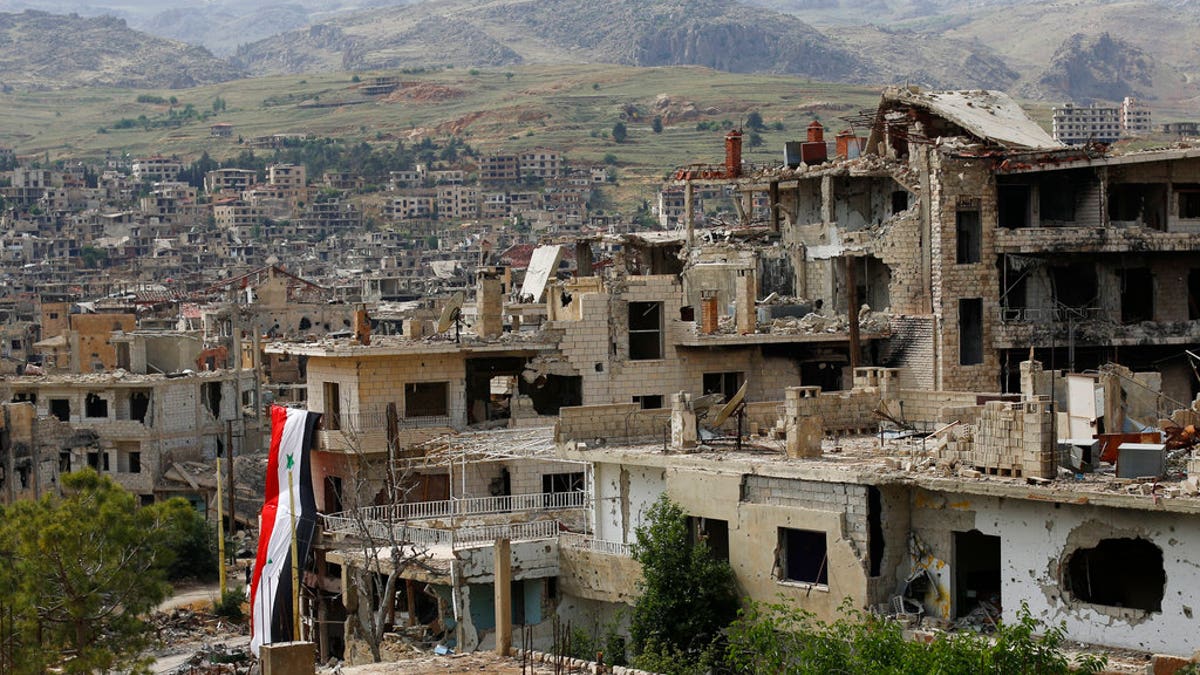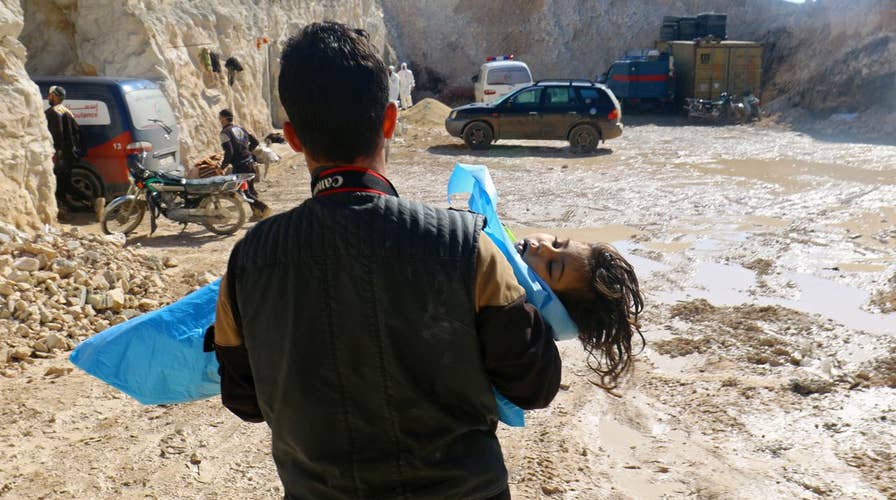Syria’s chemical weapons use: A history
Syria conflict: A look back at the atrocities during the Syrian civil war allegedly conducted by the Assad regime against the rebels and civilians
As the White House warned against a potential impending chemical attack in Syria, the U.S. Pentagon on Tuesday confirmed that it’s detected “active preparations” for use of chemicals in the Middle Eastern nation.
“The United States has identified potential preparations for another chemical weapons attack by the Assad regime that would likely result in the mass murder of civilians, including innocent children,” White House Press Secretary Sean Spicer said Monday evening.
Syrian President Bashar Assad's government and Russia dismissed the White House’s allegation that Damascus was preparing a new chemical weapons attack
Spicer warned that should Assad conduct “another mass murder attack using chemical weapons,” then “he and his military will pay a heavy price.”
The White House said the recent “activities” by the Syrians appear to be “similar to preparations the [Assad] regime made” prior to the chemical weapons attack in April.
Here’s a brief look at Syria’s recent alleged war crimes.
April 2017
A gas attack widely blamed on the Assad regime on April 4 killed 89 people in the town of Khan Sheikhoun in northwestern Syria.
The U.S. says that attack was launched from the Shayrat air base. It was the second nerve gas attack the U.S. has attributed to the Syrian government since 2013.
“We were attacked with four strikes,” 27-year-old Syrian journalist Hadi Abdullah told Fox News following the attack. “When people went to help, they were choked with the poisoned gas.”
The Organization for the Prohibition of Chemical Weapons, an international chemical weapons watchdog, confirmed in June that sarin gas was used in the attack.
‘ACTIVITY’ SEEN AT SYRIAN BASE WHERE CHEMICAL ATTACK ORIGINATED, DEFENSE OFFICIALS SAY
Aside from the U.S., the United Kingdom, Israel, France and Human Rights Watch attributed the attack to Assad’s forces.
Syrian doctors blamed a combination of toxic gases released during the airstrikes for the high death count. Victims showed signs of suffocation, convulsions, foaming at the mouth and pupil constriction.
“The government’s recent use of nerve agents is a deadly escalation – and part of a clear pattern,” Kenneth Roth, executive director of Human Rights Watch said in a statement. “In the last six months, the government has used warplanes, helicopters, and ground forces to deliver chlorine and sarin in Damascus, Hama, Idlib, and Aleppo. That’s widespread and systematic use of chemical weapons.”
“When people went to help, they were choked with the poisoned gas.”
Assad had denied responsibility for the attack on the rebel-held town.
Days later, President Donald Trump launched a retaliatory cruise missile strike on a Syrian government-controlled air base where U.S. officials said the Syrian military had launched the chemical attack.
It was the first direct American assault on the Syrian government and Trump's most dramatic military order since becoming president months before.
CHEMICAL WEAPONS ATTACK LATEST IN LITANY OF SYRIAN ATROCITIES
Trump said at the time that the Khan Sheikhoun attack crossed "many, many lines," and called on "all civilized nations" to join the U.S. in seeking an end to the carnage in Syria.
Syria maintained it hadn't used chemical weapons and blamed opposition fighters for stockpiling the chemicals. Russia's Defense Ministry said the toxic agents were released when a Syrian airstrike hit a rebel chemical weapons arsenal and munitions factory. Russia is a close ally of Assad.
March 2015
Human Rights Watch and the United Nations blamed the Syrian government for dropping toxic chemicals — such as chlorine — on the northwestern town of Sarmin via multiple barrel bomb attacks.
The Syrian Air Force used “makeshift weapons deployed from helicopters” in a March attack, according to a confidential report from the United Nations and an international chemical weapons monitor released in August 2016.
RUSSIA ACCUSES US OF PROVOCATION OVER SYRIA CHEMICAL-ATTACK WARNING

AP Photo/Hassan Ammar (The Syrian government on June 27, 2017 dismissed White House allegations that it was preparing a new chemical weapons attack.)
Human Rights Watch said one attack killed six people, including three children. The nonprofit organization alleged that at least 206 people were affected by the chemical attacks.
“Syrian authorities appear once again to have shown complete disregard for human suffering by violating the global prohibition against chemical warfare,” Nadim Houry, deputy Middle East and North Africa director for the nonprofit, said in a statement at the time.
April 2014
The U.N. report also alleged that the Syrian Air Force dropped bombs with chlorine on the town of Talmenes in April 2014.
Human Rights Watch blamed the government for dropping barrel bombs with chlorine gas on three towns in Northern Syria in mid-April.
SURVIVORS OF SYRIA CHEMICAL ATTACK GRAPPLE WITH FALLOUT
“Syria’s apparent use of chlorine gas as a weapon – not to mention targeting of civilians – is a plain violation of international law,” Houry said at the time.
August 2013
More than 1,400 people — including hundreds of children — were killed in what is believed to be the largest-scale use of chemical weapons to date.
The U.S. government alleged that Syrian specialists loaded warheads with deadly chemicals and launched them behind the government’s defensive lines in the middle of the night on August 21.
U.N. investigators visited the sites and determined that ground-to-ground missiles loaded with sarin were fired on civilian areas while residents slept. The U.S. and others blamed the Syrian government, the only warring party at the time known to have sarin gas.
Victims in the attack suffered from shortness of breath, blurred vision, disorientation, weakness, vomiting and eventual loss of consciousness, the BBC reported at the time. Those symptoms are consistent with exposure to a nerve agent, according to the BBC.
May 2013
For two days at the beginning of May, government forces and militias raided the coastal towns of Bayda and Baniyas, burning homes and shooting families to death.
While troops were allegedly searching for army defectors and other dissidents, at least 248 people were killed.
The Associated Press contributed to this report.

